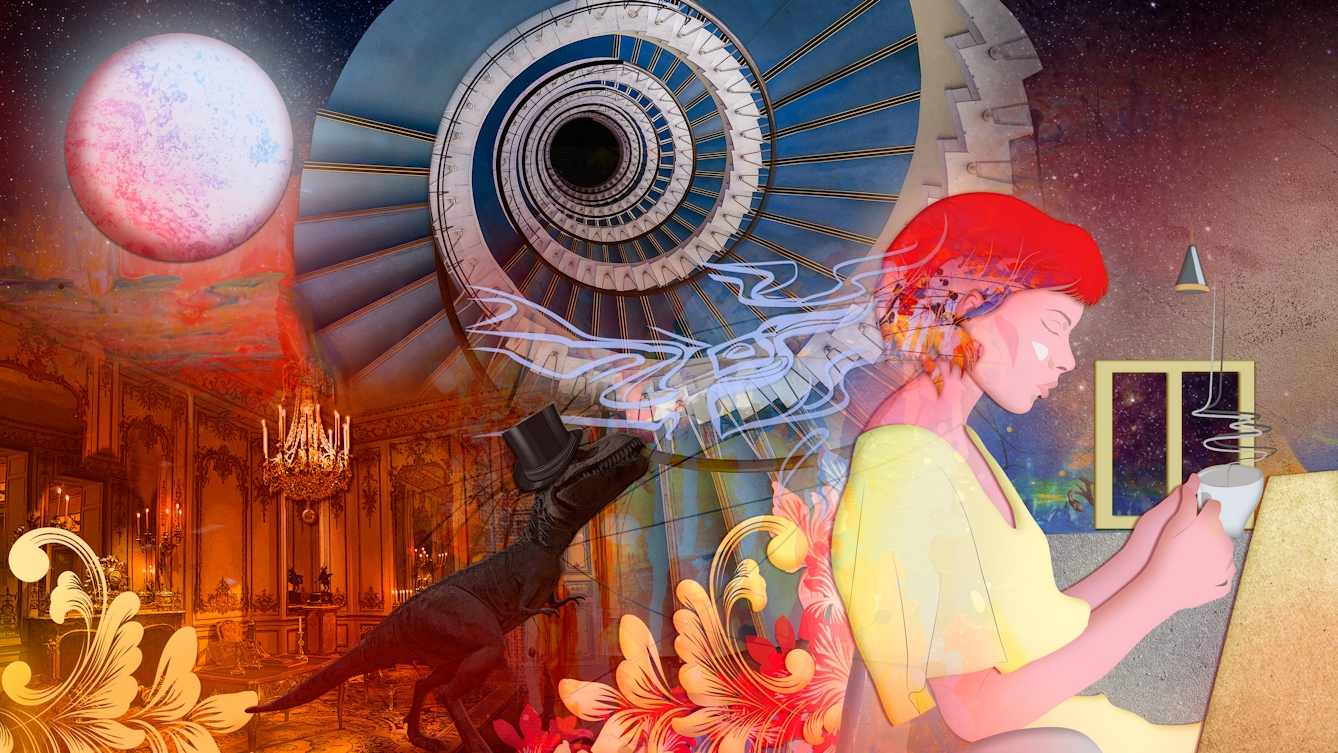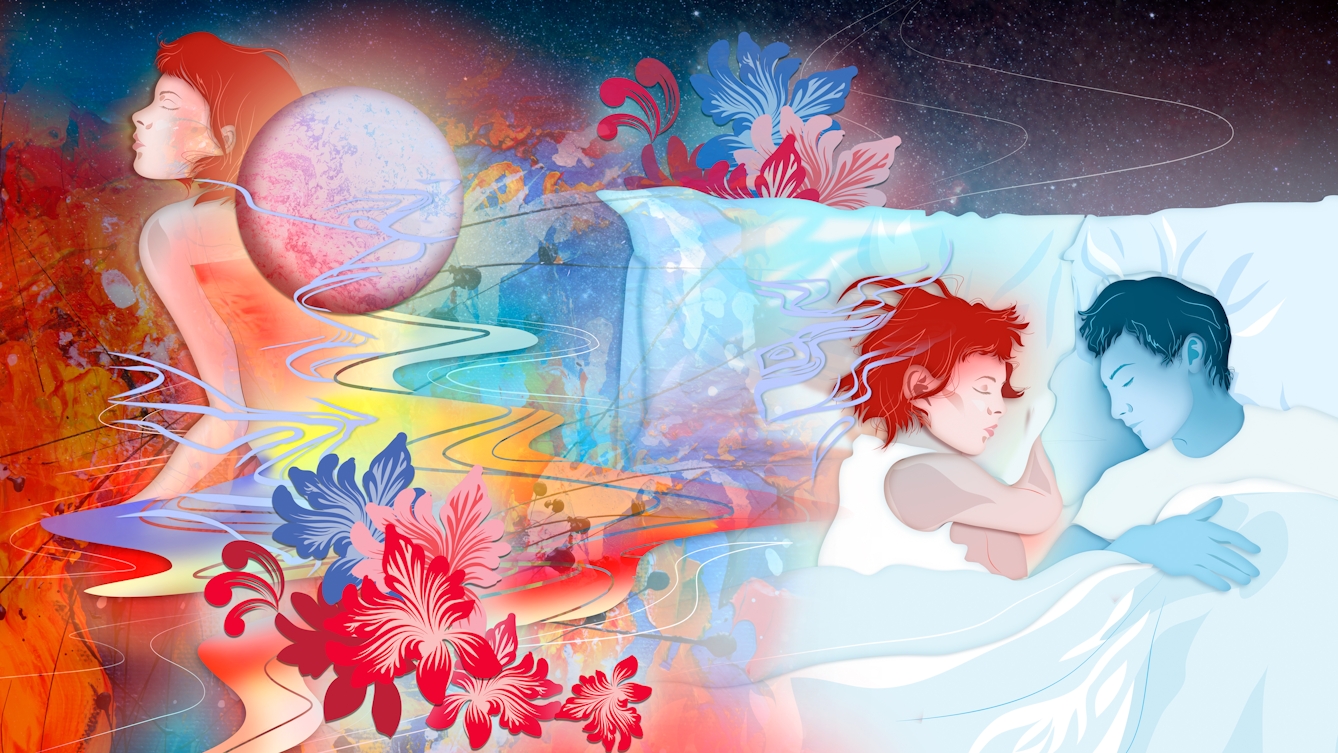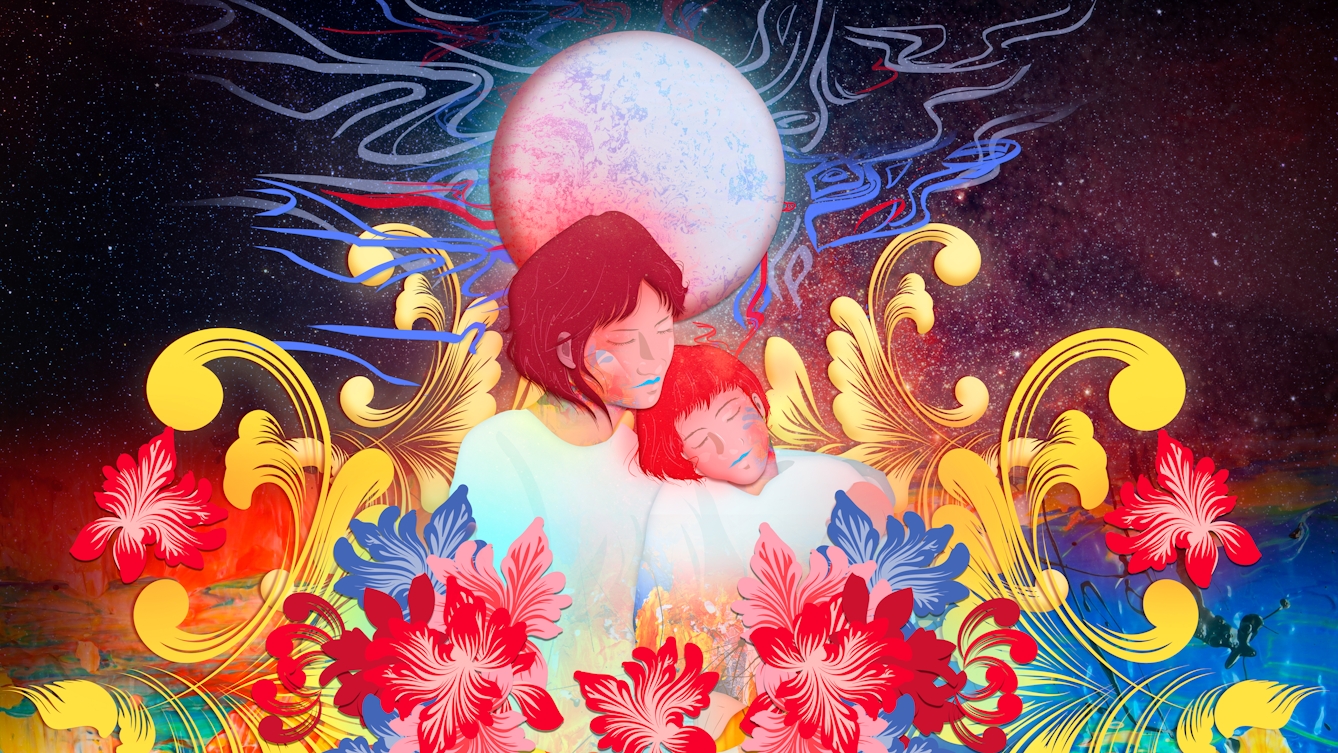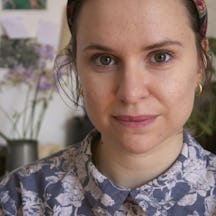Katie da Cunha Lewin’s dreams are so potent that they invade her waking hours. Here she explores how they help her understand many aspects of herself, and even offer solutions to her daytime problems.
I remember my dreams every night. I feel I can say this with certainty, though I know it is hard to prove. And I am, somehow, visited by my dreams during the day, sometimes from that night and sometimes from many years ago. These sudden flashes tear me momentarily from the edifices of waking life, and I find myself in the knotted inexactness of my dream world once more.
I can call upon many images from dreams readily, but as I get older I am less able to date them, as if they are also memories that get hazier with time. I’ve thought about this closeness often, and the relationship between waking and dreaming was brought into sharp relief when I read recently that EEG readings show that the brain of someone in rapid eye movement (REM) sleep and the brain of someone awake are almost indistinguishable. We are also alive at night.
Maybe I should say that, rather than ‘remembering’ my dreams, I deliberately spend time reflecting and musing on them. I try to find space after waking to let the dream images settle in, allowing them opportunities to re-emerge later, as I am doing something mundane like making a cup of tea or having a shower. I know by doing this that I elevate their importance, which in turn gives them additional power: the more I think about dreams, the more I dream.
Dinosaurs in top hats; beautifully dishevelled Victorian bedrooms; winding glass staircases; people I’ll never see again; people I’ve not seen for a long time; people who have died; people I cannot stand; the endings of friendships that feel like the purest heartbreak; cartoonishly erotic dreams; extremely realistic sex dreams; dreams of the release of anger, in which I give almost verbatim speeches I have rehearsed in my head to those who have wronged me; and exquisitely boring narratives of being in school, losing my teeth, and being naked in public.

“I should say that, rather than ‘remembering’ my dreams, I deliberately spend time reflecting and musing on them... as I am doing something mundane like making a cup of tea or having a shower.”
A profound gift
I’ve never found dreams tedious, mine or anyone else’s. I welcome people explaining their dreams to me, not necessarily for the content itself, but for the difficulties people have in recounting what they’ve seen. I see their faces contort with concentration as they try to find ways of giving language to dream experiences so often beyond description.
I’ve occasionally wished I could transmit my dreams to other people so I could share feelings or images before they are lost, and I am only left with the overhang of meaning without the narrative. On the other hand, there is power in the secret world of dreaming that can never be fully shared.
My dreams can be as ridiculous and over-the-top as anyone else’s, but they have also produced analogies I could never have created in my waking life. During a tumultuous relationship many years ago, I dreamed that the man I was in love with lay on the other side of a row of raised glass forks. We both slid along the floor, staring at each other, and as we did so, the glass distorted and changed what we could see, and though I tried to look him in the eye, I could never manage it.
I’ve never found dreams tedious, mine or anyone else’s.
I woke up knowing that I had lost sight of him in all the arguing and heartache, and that we had let go of what originally drew us together. Then I dreamed I saw him at a party, and that every time I went to say hello to him, he would take a step or two away from me. I knew how to read this: there would always be a distance no amount of willing on my part would close.

“Dreams remind me that I am alone... ‘Even when you're sleeping together, you're all alone.’ Waking up to realise that there is another person beside you who has also been dreaming makes this even more pronounced.”
These metaphors are the most profound gift of my unconscious life, though they hurt and wound as nothing else can. In their pain and truth, I can find new clarity or new freedom. Though the meanings of my dreams are not always easy to work out, certain things feel like prompts or nudges in the right direction. In accumulating images or feelings, I can pay attention to things within myself that need addressing.
The power of images and emotions
In a period of depression, my dreams became gruesome: I had one that reoccurred many times in which I was crawling through a pile of dead bodies, lost in the darkening blood and slackened limbs. But during these periods it is not only that my dreams become repulsive, but that I have the feeling of dreaming too much. I wake up many times in the middle of dreams, and when I finally get up, I am weighed down by what I have seen and the convoluted narratives I’ve lived through.
Sadness, anxiety and worry often lead the body to dream more, but in REM sleep we release cortisol, the stress hormone. If we are in REM sleep for longer than normal, and are therefore dreaming for longer than we should – about an hour and a half a night – we feel the effects of this cortisol, and wake up feeling more tired than when we went to bed.
It’s troubling when dreaming becomes a burden, and imposes itself too strongly on conscious life. But this sometimes happens, even without this sensation of excessive dreaming. It’s hard to describe the power of the feelings conjured in dreams, the babies I have birthed, the conversations I have had, the visits from the dead – I can’t shake them sometimes.

“The only other person who understands this is my mother. We are tied together not only through our capacity for dreams, but through the importance we give them in our waking life.”
The only other person who understands this is my mother. We are tied together not only through our capacity for dreams, but through the importance we give them in our waking life. Only she really understands the unshakeable power of the dream image that will not release its hold.
I have thought about ways to dream less through meditation, stricter bedtime routines, even actively trying to forget my dreams each day; training my way out of it. My mother has sometimes counselled me to take my dreams less seriously and let the images and their related emotions dissipate and fade.
Even so, dreaming feels like it is such a part of my life that to let it go would be to alter some fundamental aspect of myself and my interaction with the world. I know that for my mother it is the same. To get rid of the vivid nightmares would be to forfeit the extraordinary clarity I am sometimes afforded by what happens in my sleep.
Dreaming too much or too vividly can be disturbing; nonetheless, I never envision my unconsciousness as a malicious force producing violence unnecessarily. As it reveals to me the grisly contents of myself, I acknowledge that I am made up from many parts, and that I cannot categorise any feeling, action, or emotion neatly as either good or bad.
My other life in the night is an unceasing well of trouble, joy and confusion. Even when it’s painful, I am grateful for this alternative life I lead.
About the contributors
Katie da Cunha Lewin
Katie da Cunha Lewin’s writing and reviews have been published in the Times Literary Supplement, The White Review, Los Angeles Review of Books, and Prospect, among other places. She is currently working on her first book.
Vane MG
Vane MG is a multidisciplinary artist and designer from Colombia who is now established in London. She has worked in the design world since 2009, and in 2015 began working on projects that highlight the importance of Latin American women. Her objective is to attempt to reclaim elements of the cultural past, integrating it with the present and creating images that help define a lost identity. Some of her artworks include painting murals in the Princess of Wales Conservatory for the Orchid Festival at Kew Gardens, London. She also participated in an art and dance performance at Tate Modern, painting a piece representing Afro Colombian roots.


